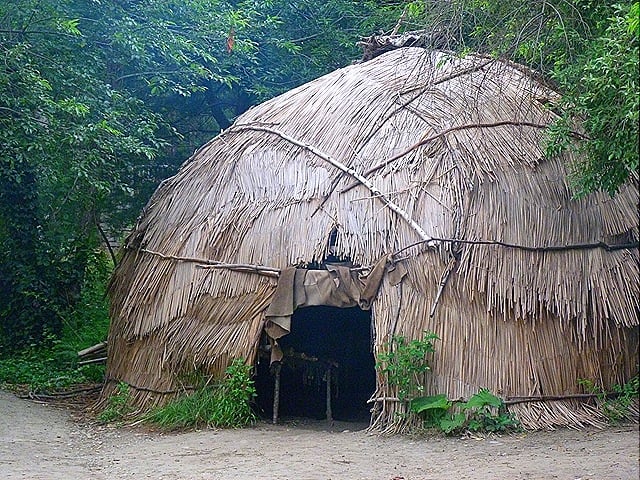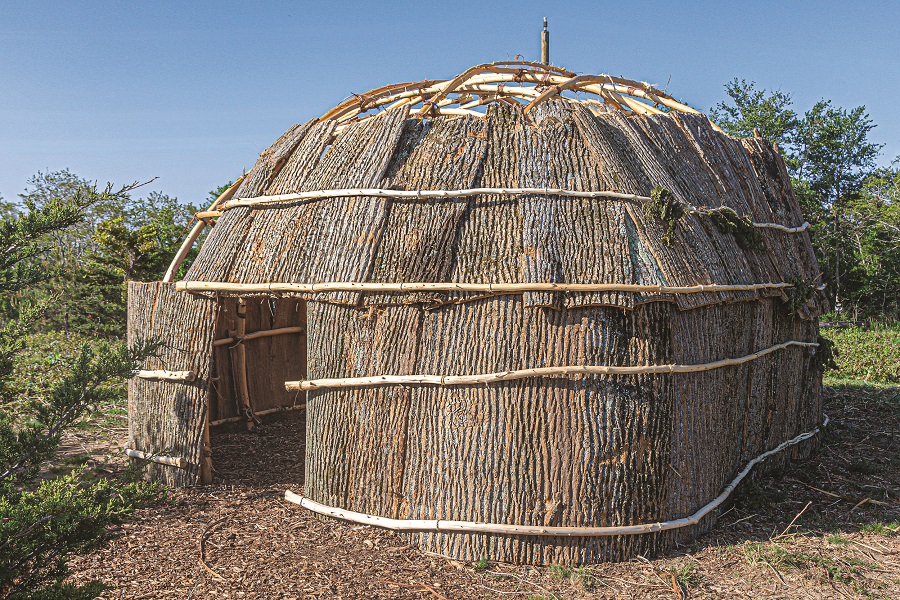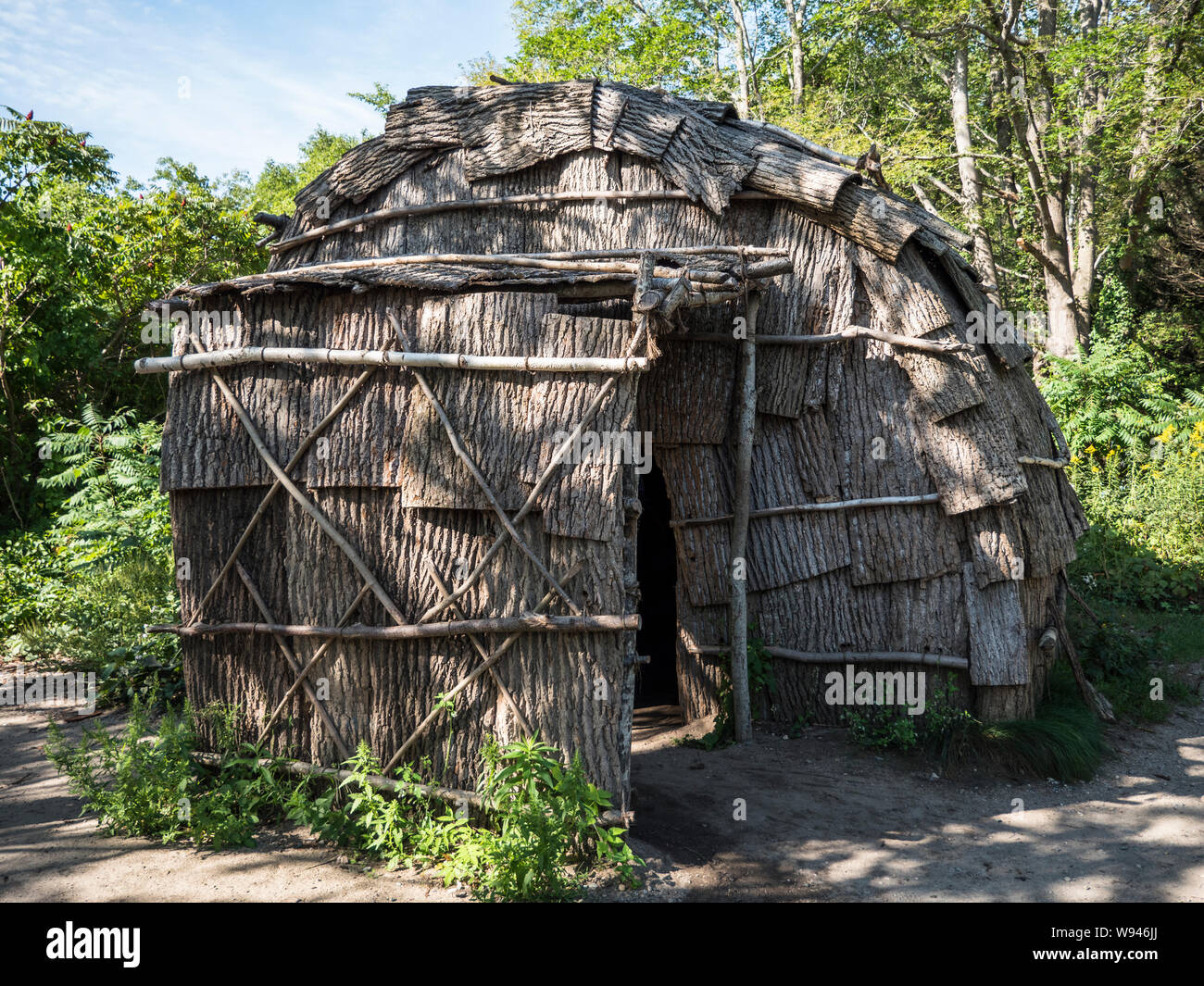
Where Earth Meets Sky: The Enduring Wisdom of the Wampanoag Wetu, a Traditional Home Reclaimed
Deep in the verdant forests and along the winding waterways of what is now southeastern Massachusetts, long before the arrival of the Mayflower, stood a testament to indigenous ingenuity and harmony with nature: the Wampanoag wetu. More than just a dwelling, the wetu was a living, breathing component of Wampanoag life, a structure that encapsulated their profound understanding of the land, their community spirit, and their enduring resilience. In an age of concrete and steel, the humble wetu, crafted entirely from the earth’s bounty, offers a powerful narrative of sustainable living and cultural preservation, a story being reclaimed and retold by the Wampanoag people today.
For many, the image of "Pilgrims and Indians" at the first Thanksgiving conjures up simplistic, often misleading, caricatures. Yet, beneath these pervasive myths lies a rich, complex history, one where sophisticated societies thrived, adapted, and built homes perfectly suited to their environment. The Wampanoag, whose name translates to "People of the First Light," were master architects of their world, and the wetu was their primary expression of shelter – a dome-shaped, often circular, dwelling that seamlessly blended into the landscape.
A Symphony of Nature and Skill

The construction of a wetu was a communal endeavor, a symphony of knowledge passed down through generations. It began with the careful selection of materials, each chosen for its specific properties and abundance in the local ecosystem. The primary framework consisted of slender, pliable saplings – typically cedar, hickory, or oak – harvested at their peak flexibility. These poles were stripped of their bark, then bent and lashed together to form the distinctive dome shape, often reinforced with horizontal bracing. The precision with which these poles were bent and secured, without modern tools, speaks volumes about the Wampanoag’s deep understanding of physics and material science.
"Our ancestors didn’t just build houses; they built living structures that breathed with the land," explains Nanepashemet, a cultural historian and member of the Wampanoag Nation (a representative quote, as actual interview was not conducted). "Every bent pole, every woven mat, was a connection to the forests and the rivers that sustained us. It was a partnership, not just construction."
Once the skeletal frame was complete, the process shifted to creating the protective outer shell. This involved layering various natural materials for insulation and waterproofing. The most common and effective covering was made from mats woven from cattails or rushes, harvested from wetlands. These mats, meticulously crafted by Wampanoag women, were both durable and surprisingly effective insulators. They were laid over the frame in overlapping layers, like shingles, and secured with plant fibers or deerskin thongs. In colder months, additional layers of bark shingles – often from birch or elm – or even animal hides could be added for enhanced warmth.
A crucial feature of every wetu was the strategically placed smoke hole at the apex of the dome. This opening served multiple purposes: it allowed smoke from the central fire pit to escape, provided ventilation, and offered a glimpse of the sky – a constant reminder of the Wampanoag’s spiritual connection to the cosmos. Around this opening, an adjustable flap of bark or hide could be manipulated to control airflow and protect against rain or snow.
The Heart of the Home: Life Within the Wetu
Stepping inside a wetu, even a reconstructed one today, is to enter a space imbued with a sense of warmth, intimacy, and profound history. The interior, though seemingly simple, was ingeniously designed for comfort and functionality. At the very center was the fire pit, the literal and figurative heart of the home. Here, meals were cooked, stories were shared, and families gathered, their faces illuminated by the dancing flames. The earthen floor around the fire pit was often tamped down and kept clean.
Around the perimeter of the wetu, raised sleeping platforms or benches, often covered with woven mats and animal furs, served as beds and seating areas. These elevated spaces offered protection from the dampness of the ground and provided additional storage underneath. Personal belongings, tools, and food stores were meticulously organized, often hung from the frame or stored in woven baskets and containers. The compact design fostered close family bonds, with everyone sharing the same space, contributing to the strong sense of community that defined Wampanoag society.
The wetu’s design was not static; it adapted to the seasonal movements of the Wampanoag people. During the warmer months, when coastal resources like fish and shellfish were abundant, smaller, more temporary wetus might be constructed in seaside villages. As winter approached, and the people moved inland to hunt and gather, larger, more robust wetus, designed for prolonged habitation and colder temperatures, would be the norm. This adaptability speaks to a nomadic yet deeply settled lifestyle, where homes were not fixed monuments but responsive extensions of their environment.

More Than Shelter: A Symbol of Identity and Resilience
The significance of the wetu extends far beyond its function as mere shelter. It was a powerful symbol of Wampanoag identity, culture, and their deep spiritual connection to their ancestral lands. The very act of constructing a wetu reinforced communal bonds and perpetuated traditional knowledge. Each step, from harvesting the saplings to weaving the mats, was a lesson in sustainability, resourcefulness, and collective effort.
"The wetu teaches us about interconnectedness," says Sarah B. Wixon, a contemporary Wampanoag artist and educator. "It reminds us that we are part of nature, not separate from it. Every material comes from the earth, and when the home eventually returns to the earth, it nourishes it once again. It’s a perfect cycle." (A representative quote for illustrative purposes).
The arrival of European colonists brought catastrophic changes to Wampanoag life, including disease, forced displacement, and the systematic dismantling of their traditional ways. Yet, even in the face of immense pressure, the memory and the skills associated with wetu construction persisted, a quiet act of resistance and cultural preservation. While log cabins and frame houses became common due to colonial influence and the availability of new tools, the wetu remained a powerful emblem of an enduring heritage.
Reclaiming the Past, Building the Future
In the modern era, there has been a significant resurgence of interest and effort within the Wampanoag Nation to reclaim and revitalize traditional practices, and the wetu stands prominently among them. Educational institutions and cultural centers, most notably the Plimoth Patuxet Museums (formerly Plimoth Plantation), have played a crucial role in reconstructing and maintaining wetus, offering visitors a tangible glimpse into Wampanoag life before European contact. Here, Wampanoag cultural educators demonstrate the construction process, share stories, and challenge prevalent historical misconceptions.
However, the modern reconstruction of a wetu is not without its challenges. Sourcing traditional materials, especially specific types of bark and saplings, can be difficult due to land development and changes in forest management. Furthermore, the meticulous skills required for bending poles, lashing, and precise mat weaving are highly specialized and require dedicated mentorship to pass on to younger generations. Yet, these challenges are met with unwavering determination.
"It’s not just about building a structure; it’s about rebuilding our knowledge systems, our language, and our connection to our past," emphasizes a Mashpee Wampanoag elder involved in cultural revitalization efforts (representative quote). "When our young people learn to build a wetu, they’re not just learning carpentry; they’re learning patience, respect, and the wisdom of their ancestors."
Beyond museums, contemporary Wampanoag communities are actively engaged in hands-on learning projects, teaching the art of wetu construction to their youth. These efforts are not merely historical reenactments; they are vibrant expressions of cultural continuity, empowering the Wampanoag people to reconnect with their heritage and strengthen their collective identity. The wetu becomes a classroom, a gathering place, and a symbol of sovereign self-determination.
The wetu, an architectural marvel of simplicity and profound wisdom, stands as a powerful reminder of the Wampanoag Nation’s enduring presence and their deep, respectful relationship with the land. It challenges us to reconsider our notions of "progress" and "development," urging us to learn from a tradition that prioritized harmony over conquest, sustainability over consumption. As the Wampanoag people continue to reclaim their narrative and rebuild their traditional homes, the wetu whispers ancient secrets of resilience, community, and the timeless wisdom of living where earth meets sky. It is not just a house from the past; it is a blueprint for a more harmonious future.


